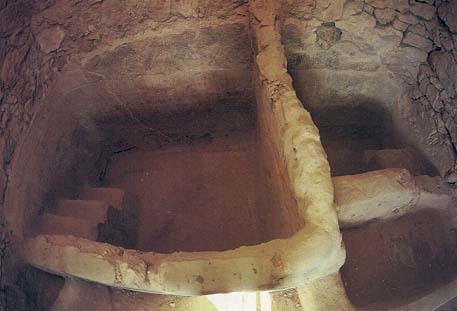Image Details

Richard Nowitz
Masada mikveh. A hallmark of ancient Jewish habitation is the presence of mikva’ot (singular, mikveh), small pools for ritual cleansings, such as this one at Masada. They were built to strict specifications: According to the Mishnah, the earliest rabbinic code of law, they must be of a certain size and filled with “living” water—water that has not been transferred from a vessel but has flowed directly into the bath from a river, spring or rainwater collector. To meet these stringent regulations, many mikva’ot, such as the one shown here, were built as two pools connected by a pipe: One pool, called an otzer (at right in this photo), contained ritually pure (living) water, and the other (at left), which was used for bathing, was filled with drawn water. The two pools were connected, and when the ritually pure water from the otzer entered the bath, it rendered the drawn water ritually clean. Author Hanan Eshel argues that if baths do not meet these specifications, they cannot be assumed to be mikva’ot. And those at Sepphoris, he says, do not.
